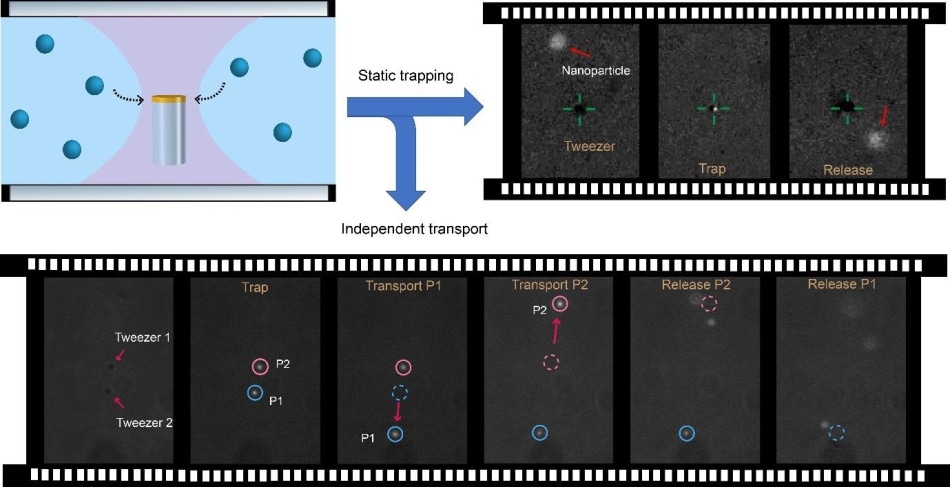Sep 16 2019
Tools for manipulating small suspended particles such as cells, micro-particles and nanoparticles play an essential role in the advancement of fundamental science and discovery of new technologies. Especially, manipulation of materials with light has led to significant breakthroughs in diverse field from atomic physics to microbiology and molecular medicine. More than thirty years ago Arthur Ashkin from Bell labs first proposed a device that used focused laser light to trap objects which shared the Noble prize in Physics in 2018. These devices are known as Optical tweezers and now a key instrument in biology, soft matter physics and quantum optics research.

A major problem faced with optical tweezers and other conventional trapping techniques is their inability to hold extremely small sized objects, also called cargo. Imagine picking up grains of salt using only a pair of needles! What makes it tough is that the force required to capture a particle reduces as it’s size decreases. The key technological breakthrough for enabling these optical tweezers to reach deeper into the nanoscale and become so-called “nanotweezers” has been plasmonics. When illuminated by light, noble metallic nanostructures create a strong electromagnetic field around themselves that can attract and trap nanoparticles that are close.
However, plasmonic tweezers also have limitations. With a limited range of influence and being fixed in space, these tweezers can only capture nanoparticles in their vicinity. This makes the entire trapping process inherently slow and inefficient for transport. So, it is important to design a technique that has the efficiency of a traditional plasmonic tweezer but, at the same time, is manoeuvrable like conventional optical tweezers.
In our earlier work (published in Science Robotics) we showed manoeuvrability of plasmonic tweezers for the first time by combined effect of magnetic and optical force. However, due to this hybrid approach, those tweezers are not applicable for certain type of colloids such as magnetic nanoparticle. It was also not possible to independently control them for parallel manipulation exercises.
In this work, to be published in the journal Nature Communications, we demonstrate an advanced nanomanipulation technique that works on optical forces alone and therefore versatile in nature. In our experiment, we have integrated a plasmonic nanodisk (made of silver) to a dielectric microrod (made of glass) and maneuvered the hybrid structure with a focused laser beam. This is a unique manifestation of “tweezer in a tweezer” concept where trapping and manuevering is achieved with a single laser beam. These all-optical nanotweezers can be driven to any target objects in any fluidic environment with precise control to capture, transport and release nanoscale cargos as small as 40 nm (typical length scale of virus, DNA and various macromolecules) with high speed and efficiency. We also showed parallel and independent control in manipulation with various nanoobjects including fluorescent nanodiamonds, magnetic nanoparticles with ultra-low laser power which is lower than the typical damage threshold of soft biological objects.
This demonstrated technology may enable isolation, manipulation and chip-level assembly of nanomaterials such as nanocrystals, fluorescent nanodiamonds and quantum dots, and allow non-invasive manipulation of fragile bio-specimens, such as bacteria, virus and various macromolecules. Apart from carrying small objects to various spots of a microfluidic device, we can also localize them with high spatial resolution and then take them away if necessary. This capability may open up new avenues in nanoscale assembly and sensing.